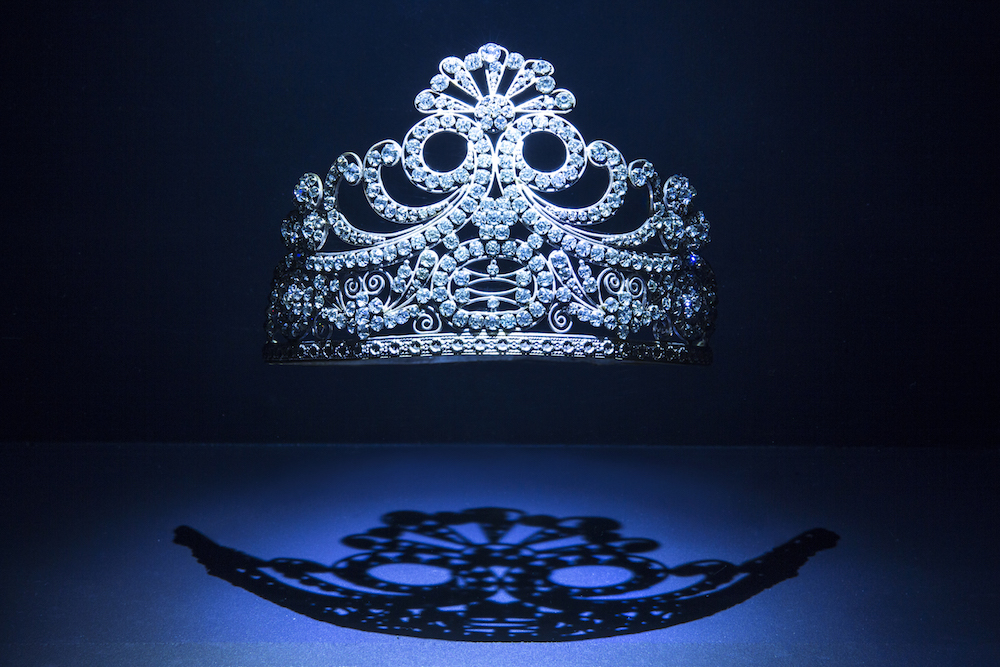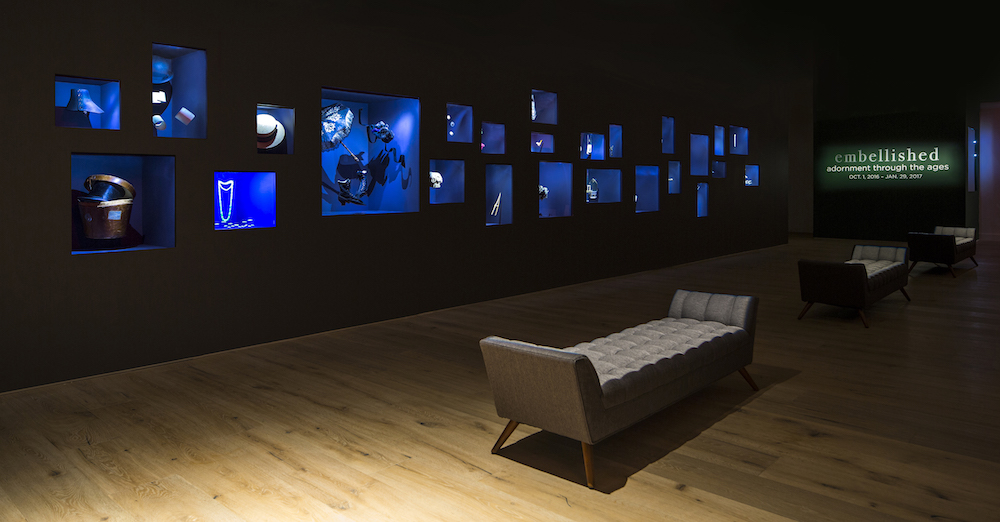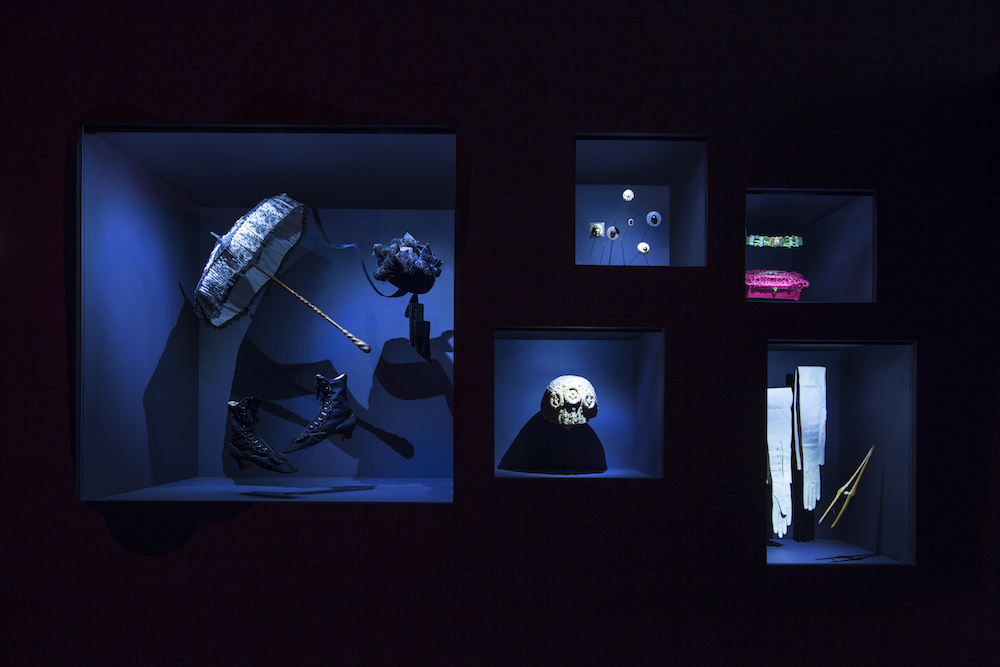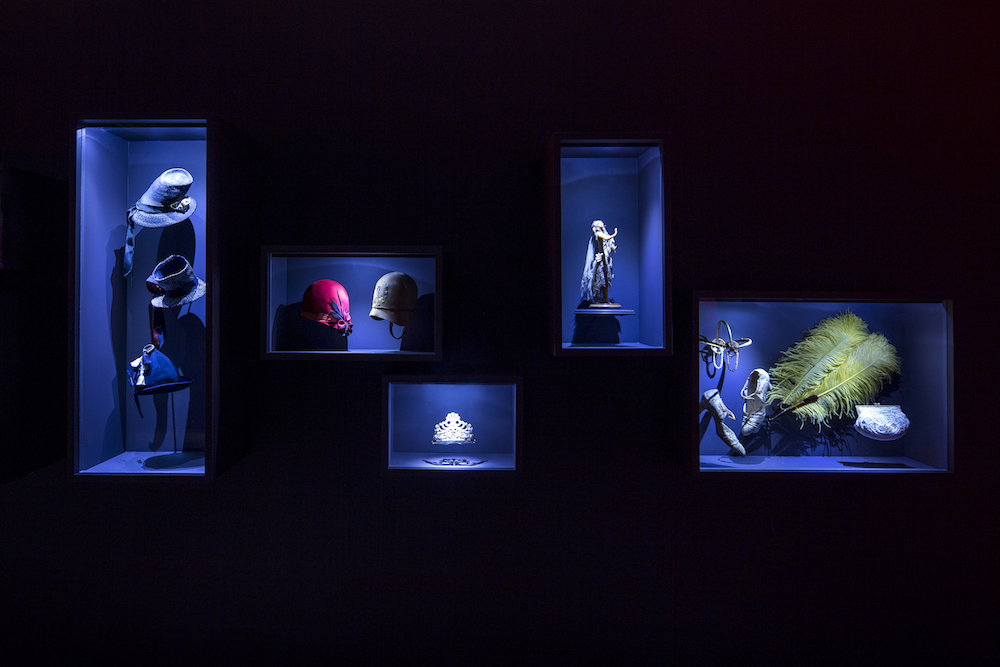Secrets of the past revealed at SCAD FASH’s ‘Embellished: Adornment Through the Ages’

SCAD FASH Museum of Fashion and Film’s exhibition “Embellished: Adornment Through the Ages,” open until Sunday, Jan. 29, features a collection that has never been on display in the United States – until now.
The exhibition, a collection of unique accessories from the 1700s-1960s, details a timeline of fashion and its relationship between form and function.
More intriguing than the accessories themselves are the socio-political stories surrounding them. Although on the surface, these pieces are just mere accessories, they tell a story of the ever-changing historical and political landscape.
Black velvet curtains drape the entryway of the dimly lit exhibition. The long, narrow room in which the exhibition is housed features a floor-length mirror at the end, continually flashing through vintage photographs. The black and forest green walls display the historical artifacts of bygone eras, encased in glowing glass boxes, each individually lit.

Among the adornments, on loan from the Rafaello Piraino Collection in Italy, is a choker complete with a velvet storage box. While chokers are commonly known for their cyclical trendiness, currently in style as well as a staple accessory of the 1990s, their origins tell a far more compelling tale of excess and danger.
At the time, chokers had become a secret fashion trend among French aristocracy. Because of the French Revolution, the wealthy couldn’t display their elevated status through dress for fear of the guillotine. However, their need for recognition as upper-class, so thoroughly ingrained in their identity, couldn’t be abandoned. Therefore, the elite started wearing chokers, typically made of red velvet, to signal to other aristocrats that they were among the financially gifted. The chokers were kept in specially designed boxes, like the one on display at SCAD FASH.
Another interesting piece on display is a uranium glass sautoir necklace, circa 1920. During the 1920s, uranium was trendy because it was thought that radioactivity possessed qualities that would give individuals more energy and youthfulness. In fact, this was such a commonly held belief that radioactive substances were commonplace in toothpaste, skin creams and serums, given to children for breakfast to give them energy before school. This necklace is still radioactive to this day.
One trend, highlighted as the exhibition advances in year, is the ever-changing purses of different decades. The first female handbags were made by their owners because there wasn’t an industry or profession dedicated to the construction of bags. The initial purses were first worn underneath clothing, attached to the waistline. However, as the construction of clothing’s chosen waistline evolved, the evolution of the handbag followed, becoming more elaborate and ornate once they became accessories visible outside the garment. A similar pattern between the relationship of skirts and shoes emerged as well. The higher the hemline, the more visible and, in effect, decorative the shoes


Keris Thomas, a third-year fashion marketing and management student, was especially taken by the story behind item number 38, a fashion doll made of beeswax, wood, silk chiffon, lace and metal, circa 1925. These small figurines were the fashion models of the time and pre-dated the existence of the runway show. These dolls were sent to the wealthy clients of designers, featuring a new collection’s garments as well as hair and makeup styled to fit the theme of the look. These dolls became a necessity because, during this period of war and turmoil in Europe, these were one of the few items eligible to cross borders, allowing the German elite to see the latest fashions from Paris.
Adorr Reynolds, a third-year fashion student, said of the exhibition, “There’s a wow factor on the evolution of fashion. What’s so interesting is that most fashion originated out of practical use first, before being used for aesthetic purposes.”
Other interesting facts from this exhibition include:
The idea of childrenswear is very recent. Into the 20th century, children wore smaller versions of adult fashions, including corsets for girls.
High heels were first worn solely by men, specifically in the military. The famous red soles of Christian Louboutin were inspired by Louis XIV of France. His heeled shoes featured red soles, which quickly became a symbol of royalty.
This exhibition, as well as its clothing contemporary, “Threads of History: Two Hundred Years of Fashion,” both on display at SCAD FASH, are not to be missed.
























